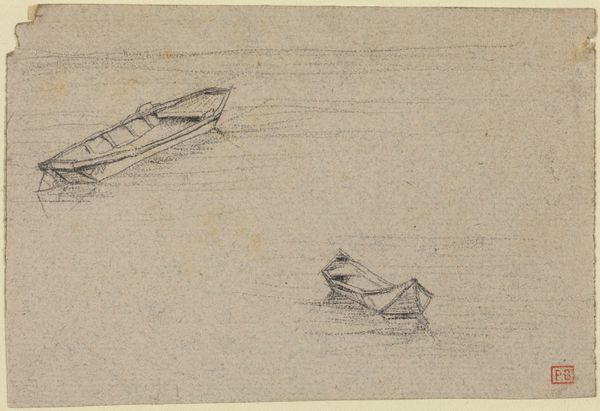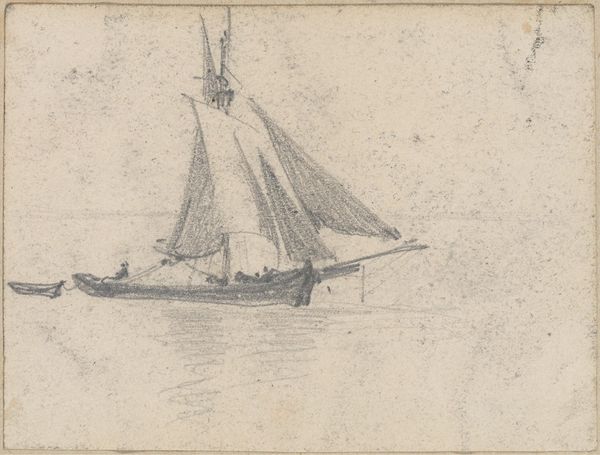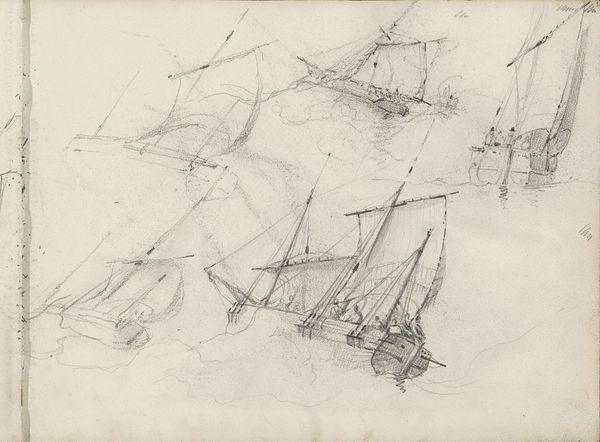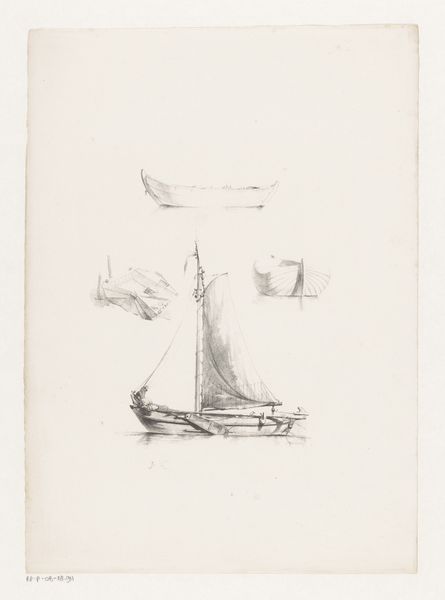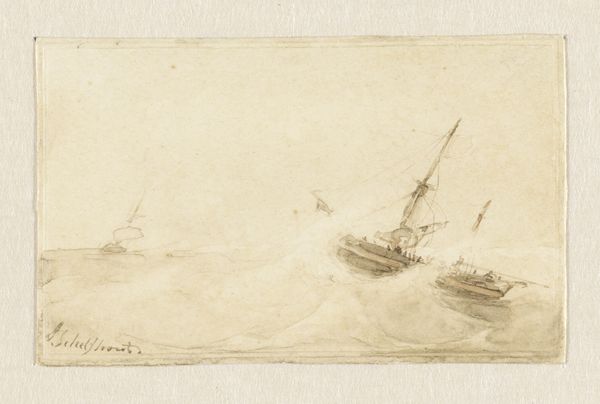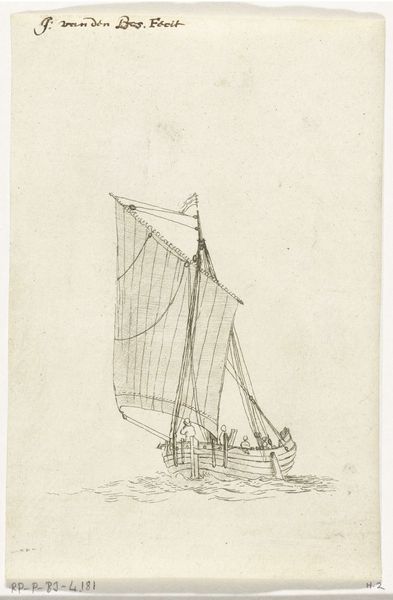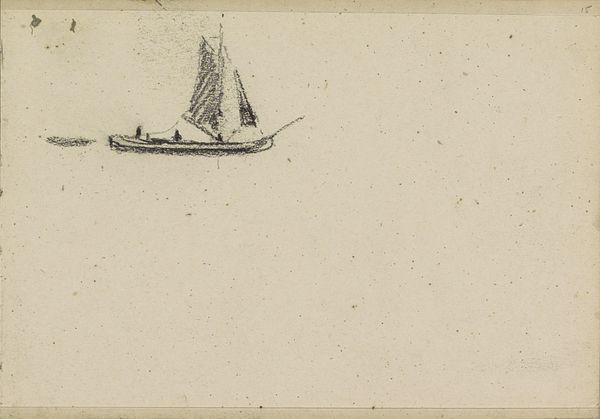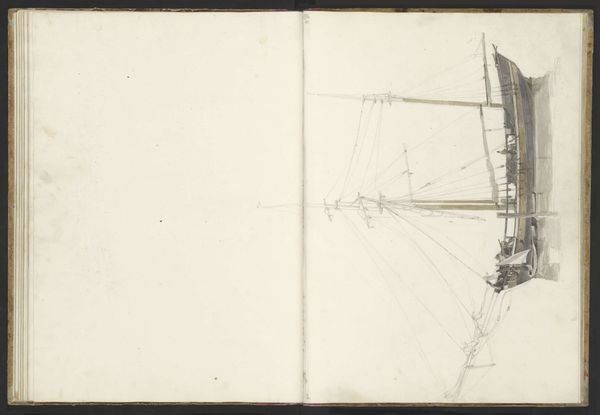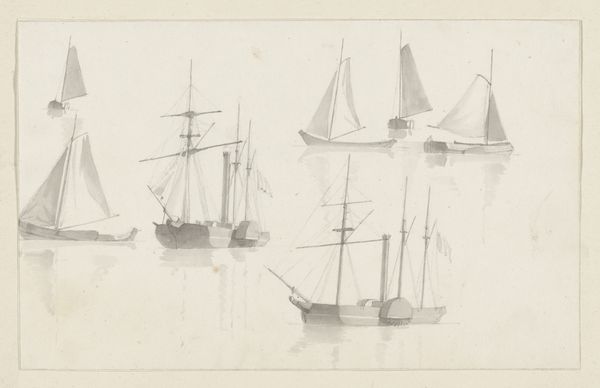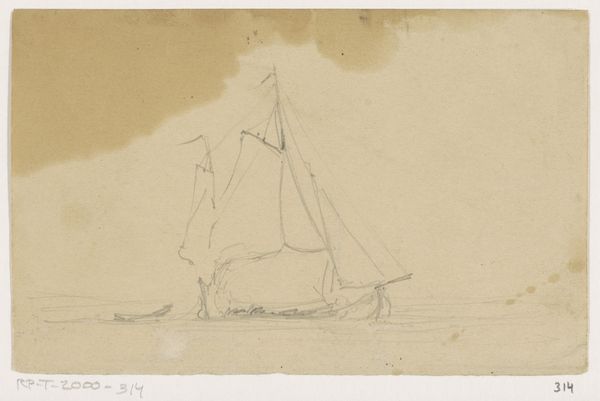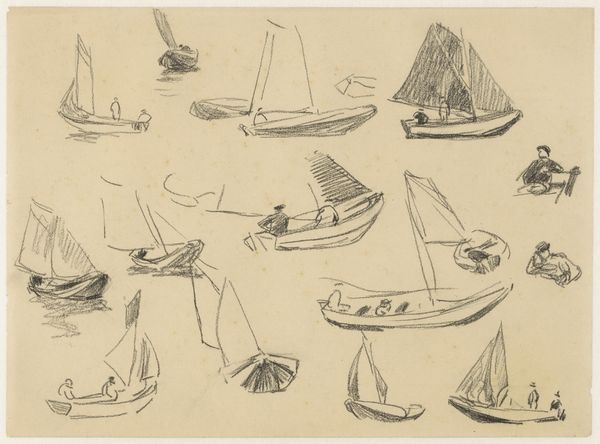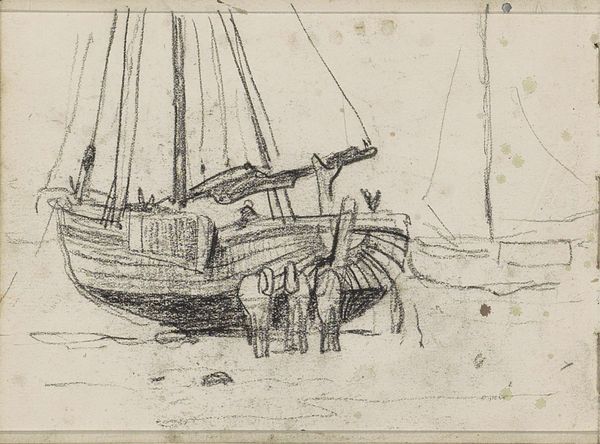
drawing, pencil
#
drawing
#
aged paper
#
toned paper
#
light pencil work
#
quirky sketch
#
pencil sketch
#
sketch book
#
landscape
#
personal sketchbook
#
pencil
#
sketchbook drawing
#
storyboard and sketchbook work
#
sketchbook art
#
realism
Dimensions: height 108 mm, width 146 mm
Copyright: Rijks Museum: Open Domain
Curator: What a charming little sketch! It feels so immediate, doesn’t it? Editor: It does have an air of immediacy. It's economical. Reminds me a little of vulnerability, almost tentative strokes on this toned paper. Curator: Well, what we have here is a drawing entitled "Twee schepen en een anker," or "Two Ships and an Anchor," created sometime between 1802 and 1882. The artist is John Linnell. It's rendered in pencil. Editor: Looking at it, I am immediately struck by the juxtaposition of potential and groundedness. The two boats evoke a sense of movement, of journeys waiting to happen, of encounters across waters perhaps—while the anchor represents stability, a deliberate halt. Linnell's era also coincides with evolving roles for women and emerging voices from working-class communities. Were they at the helm, navigating new seas? Curator: That's an intriguing reading. Certainly, these nautical elements could symbolize those social currents. One wonders about the politics of labour represented by the vessels: what kinds of industries and livelihoods were interwoven with maritime economies, and who reaped the benefits of exploitation that unfolded at sea? We can’t look at the drawing without reflecting on broader historical inequities. Editor: Precisely. What makes art relevant now is how it enters into critical discourse and helps us investigate history from the standpoints of multiple social perspectives and standpoints. How can this sketch reveal complex ideas such as gender, class and identity politics that can engage viewers to rethink institutional or cultural assumptions in a global context? Curator: True, the simple forms invite speculation. The anchor, in its stillness, may represent not just stability but also the constraints, the weight of societal norms or even political oppression during the era. And, to that point, who would these ships carry or exclude? Editor: Absolutely. This piece might seem modest at first glance. However, in scrutinizing art's function as a marker of memory, we’re impelled to probe whose histories, which people or communities are omitted from larger cultural archives—who possesses the means and power to create lasting imprints on paper or otherwise. Curator: I agree, seeing the piece as a launchpad for crucial contemporary inquiries reframes our viewing. What was initially charming deepens into an incisive reflection upon both past hegemonies and emergent subjectivities across intersections of social stratification like race or class. Editor: Exactly! Thanks to you, my historical curiosity is further stoked to consider art a profound locus where meaning evolves.
Comments
No comments
Be the first to comment and join the conversation on the ultimate creative platform.

